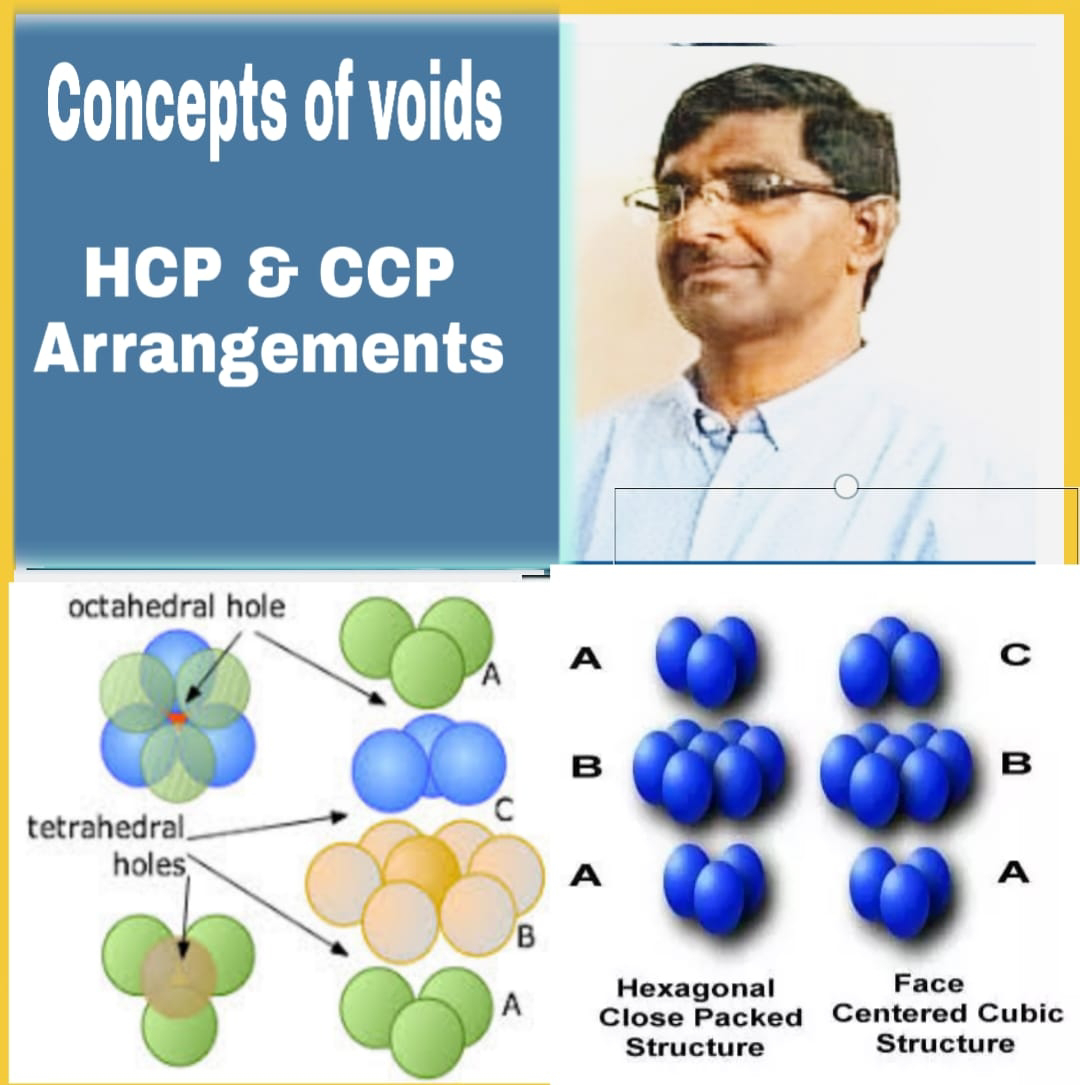Relation between nearest neighbour distance and radius of atom, Concept of Radius ratio
Relationship between the nearest neighbour distance (d), edge of the unit cell (a) and the radius of the atom (r)
(1)Simple cubic unit cell- Distance between nearest neighbour (d) = AB = a
Hence for simple cubic (SC) d = a and r = a/2
(2)Face centred cubic unit cell- Distance between nearest neighbour (d) = AC (Because spheres at the face diagonal are touching each other)
But from ∆ ABC AC2 = AB2 + BC2 Hence d = a2 + a2
d = 2a2
d = √2a
d =a/ √2
Since atomic radius (r = d/2)
r= AC/2 = a/2√2
Hence for face centred cubic (FCC)
d =a√2 and r = a/2√2
(3) Body centred cubic unit cell- The distance between nearest neighbour (d) = 1/2 CD
Since all the spheres at the corners touch the central sphere, so CD is body diagonal
From ∆ ABD
AD2 = AB2 + BD2
= a2 + a2
AD= 2a2
So nearest neighbour distance (d) = CD/2 and Atomic radius (r) = d/2
Again in ∆ ACD
CD2 = AC2 + AD2
CD2 = a2 + 2a2
CD2 = 3 a2
CD =√3a
Hence for body centred cubic (BCC) d= √3a/2
and r = d/2 =√3a/4
To sum up
Relation between d and a Relation between r and a
SC FCC BCC
d = a d = a/√2 d = √3 a/2
r = a/2 r = a/2√2 r = √3a/4
Packing Fraction-
It is defined as ratio of volumes occupied by atoms in unit cell (v) to the total volume of unit cell.
Packing fraction = v/V × Z
Where v = volume of spherical atom = π r3
V = volume of the cube = a3
Z = Number of particles
Radius ratio rule –For the stability of an ionic compound each cation should be surrounded
by maximum number of anion and vice versa( maximum electrostatic force of attraction).The number of oppositely charged ions surrounding a particular ion is called its coordination number.“ The ratio of the radius of the cation to that of the anion is called radius ratio”
Radius ratio= Radius of cation r+/ Radius of anion r-
Evidently greater is the radius ratio, larger is the size of cation and hence greater is its coordination number.








